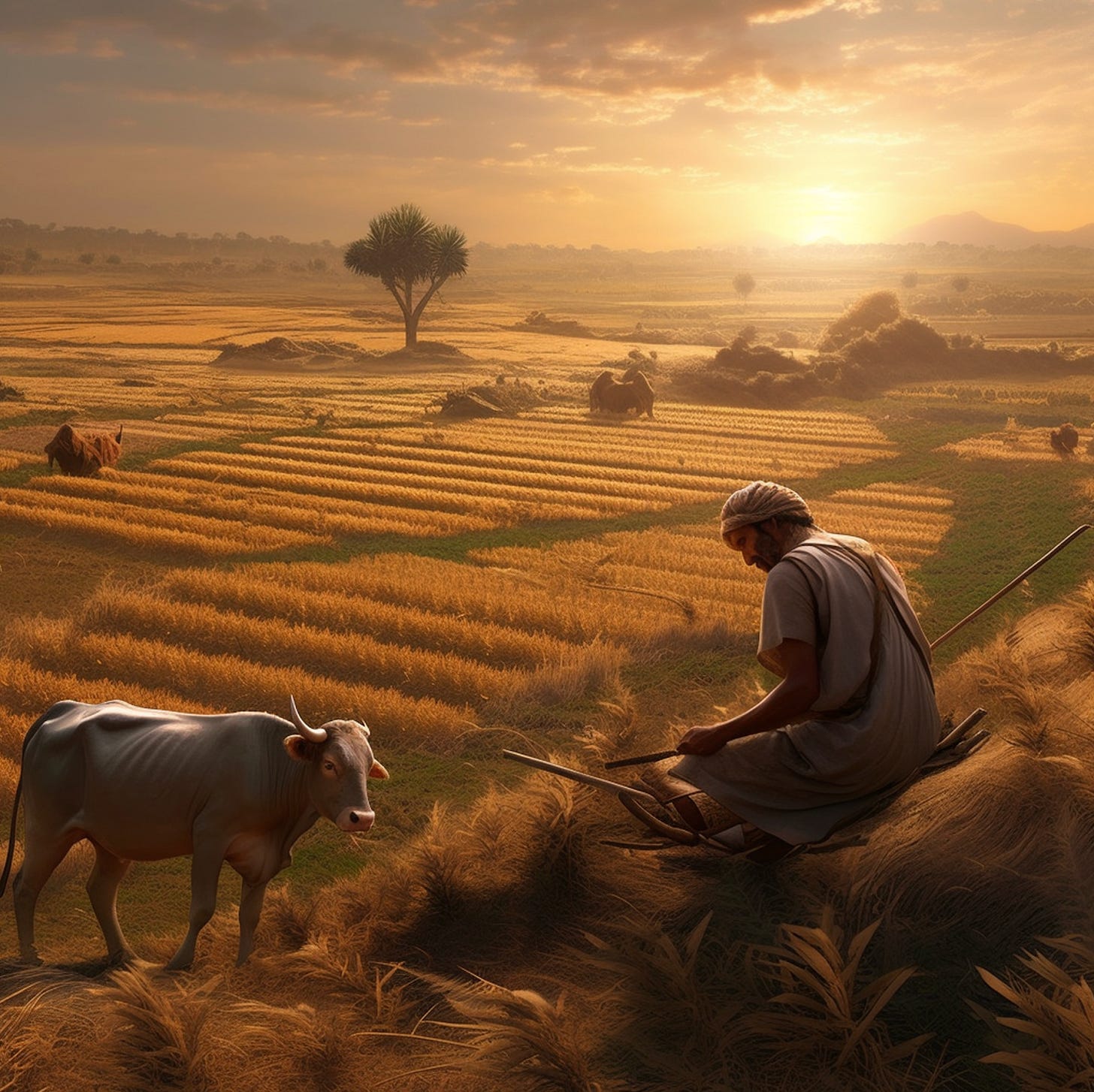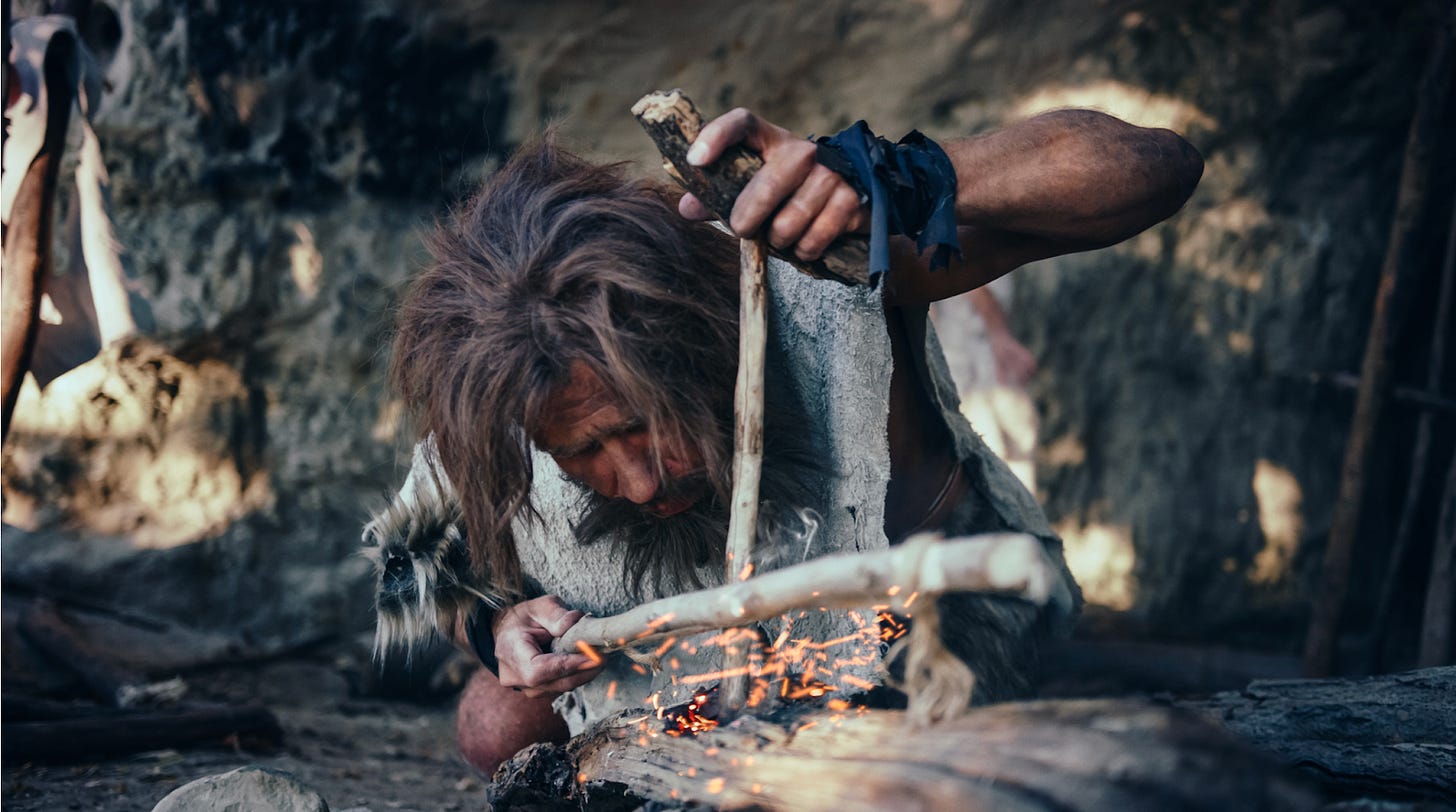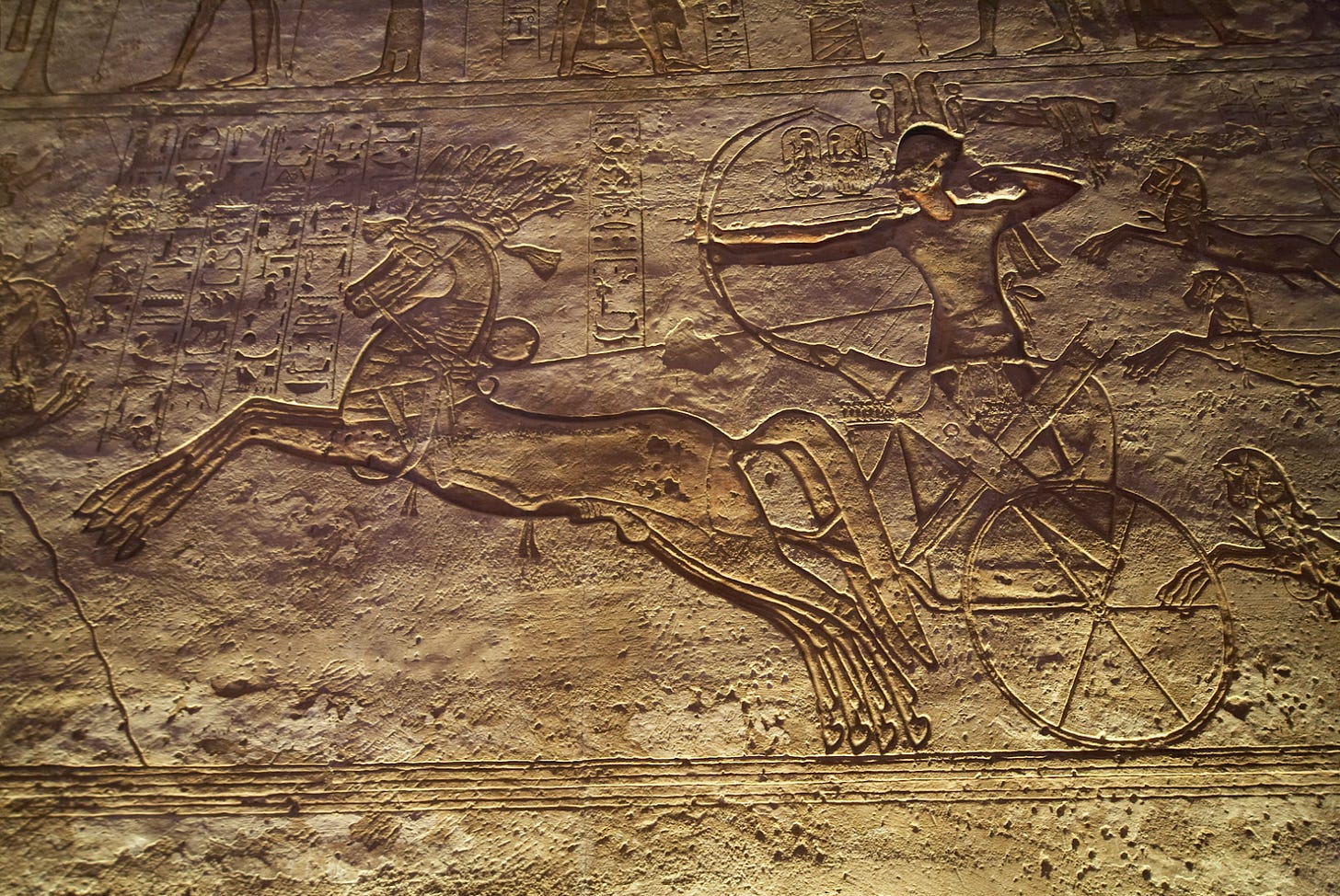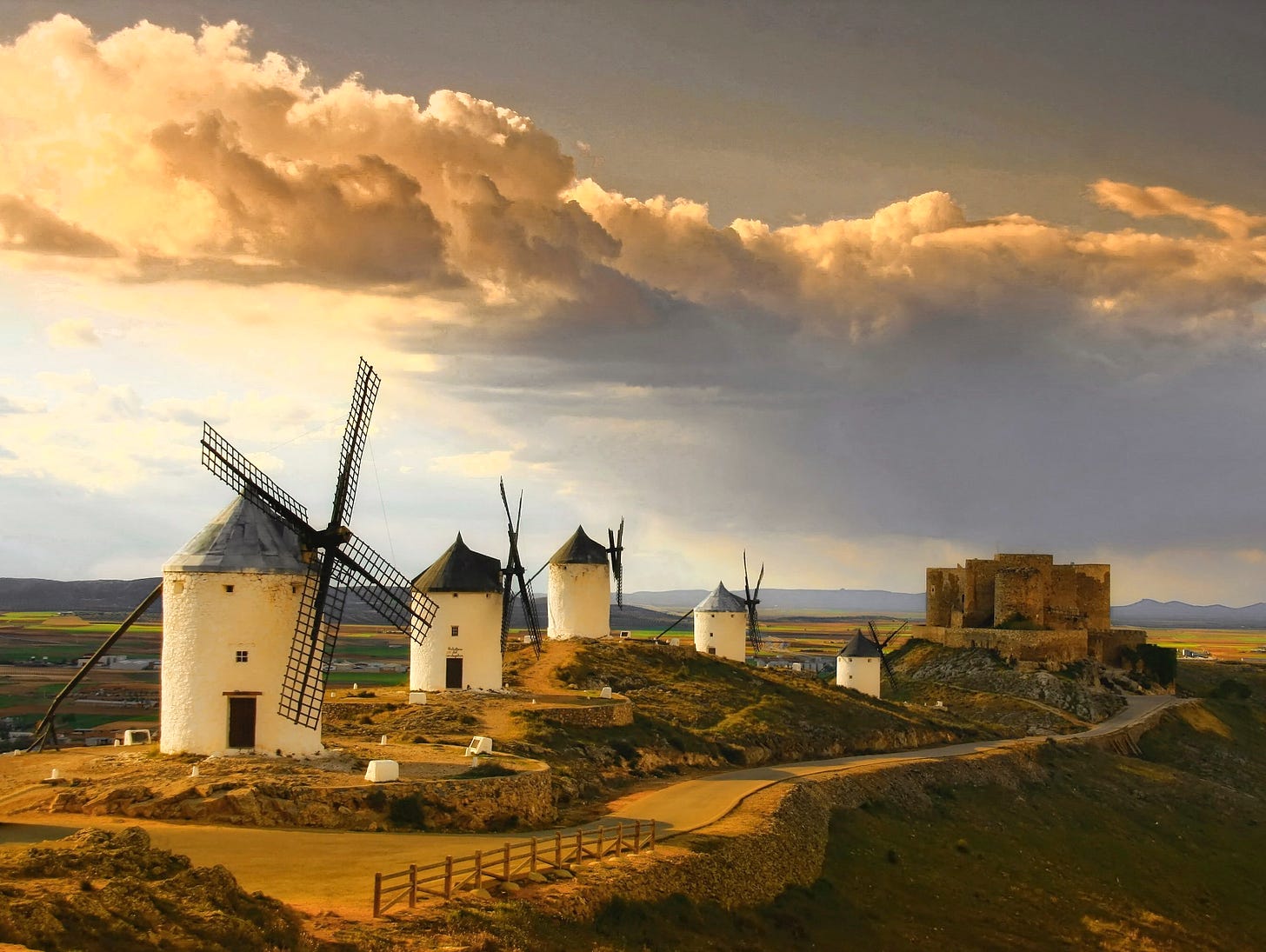💡 What Can We Learn About Energy from Ancient Energy Revolutions?
We need to transition to low-carbon energy, and fast.
Will it happen soon enough?
What will be the biggest driver of this speed?
And what big energy innovations should we expect?
How useful will they be?
In Uncharted Territories, we’ve already looked into how communication technologies and transportation technologies have determined our past, and what that means for our future. Now, it’s time to do it with energy.
Energy is one of the key factors of development. To progress further, we need a lot of it, very cheap, and very clean. The best way to predict the future of energy is to understand its past. So let’s look at the history of energy:
What have been the biggest revolutions in energy?
What can we learn from them?
Today we’re going to explore ancient energy revolutions, and in the premium article this week, we’ll explore the more modern ones.
Ancient Energy Revolutions
Before humans developed anything else, they got their energy in only one way: food1. Without it, we can’t work, we can’t warm up, we can’t defend ourselves…
That’s why the first energy revolution was fire technology.
Fire
With fire, we could generate heat, so we could more comfortably inhabit cold regions that were hard to exist in just with furs.
We could cook, which allowed us to digest food with much less work from our stomachs, and allowed us to extract much more energy from food. This was so important that humans can barely survive without cooking some of their food anymore: we co-evolved with the technology of controlling fire!
We could defend ourselves against wild animals, even when we were asleep, which meant more energy for the day.
We could light things up, which would allow some work in darkness—like painting cave walls.
Probably the next energy revolution was agriculture.
Agriculture
Agriculture is a calorie multiplier: it allows us to generate many more calories of food for every calorie of food we eat. When food was our main source of energy, increasing food meant increasing energy. Energy for our muscles, but also to create more humans, which adds more muscle to society.
This allowed us to increase our spare time through specialization: if one farmer can create energy for two people, the second person can build pyramids, become a professional soldier to defend the fields, or trade with other groups to get other goods. This is what enabled the creation of kingdoms and cities. There are no pyramids or writing without agriculture.

Every time there was an improvement to agriculture over history, it was an improvement in energy harnessing. For example, irrigation allowed us to transform water into food, so muscle energy. Techniques such as fallowing fields, crop rotation, or growing legumes increase the amount of nutrients in the ground and plants’ ability to capture them, therefore transforming more soil into human energy.
Ovens
We talk about human prehistory in terms of stone age, bronze age, and iron age. That tells you how important metals have been to humans. They’ve allowed us to craft tools to better work, cook, or kill. This resulted in a more efficient use of our energy, or in the ability to increase the size of kingdoms.
But to get metal, you need to extract it from ore, which requires a high temperature2. These are impossible without ovens. They were likely invented as kilns for pottery or bricks, and later adapted as smelters for iron ore.
Regardless of how they were invented, they allowed us to transform wood into a new type of heat: industrial heat.
Animal Husbandry
It was quite convenient for those who observed chickens and figured out they could just put a fence around them, let them roam around, and then eat them. That’s an easy way to transform insects, plants, and grains into protein for humans. The same is true for lamb, beef, pork, and other meats from domesticated animals. Milk followed the same pattern, and it was so valuable that we co-evolved with it too—adults have independently developed lactose tolerance two or three times in history3.
Domesticated animals also generated energy in other ways:
Their excrement could be used as fertilizer4, which improved agriculture, and hence human muscle.
It was also quite convenient when your ox5 could drag your plow, improving the agricultural yield even further.
Oxen could also transport stuff in a bundle on their back, heading to the market. This opened up more trade opportunities.
In some places, livestock is housed in the same building as humans to warm their homes, generating valuable heat.
Like for agriculture, successive improvements in technology improved the performance of animals as energy transformation machines. For example, the plow, and then the heavy plow, increased farm yields. The heavy plow is especially interesting: it turned poor fields in Northern Europe into fertile ones, allowing humans to extract more energy from the ground, triggering the demographic explosion of the region, allowing it to become a global superpower.
It wasn’t the only innovation that fuelled the revolution though. Horses can pull 50% more weight than oxen, and work for many more hours. So humans selectively bred even better horses, and they started replacing oxen after 1000 AD. But for their power to be truly harnessed, we needed to develop other technologies, like the horseshoe and horse collar6, and growing fodder to feed them during winter.
Wheel
With the wheel, the oxen became even more useful, since they could drag a cart instead of carrying the weight themselves, cutting down on the energy needed per unit of transportation, which allowed us to travel farther, and hence increase trade and grow wealth.
Wheels could also be dragged by oxen in mills, converting the grass they ate into power for tasks like milling cereals to make bread—a great way to increase the energy extracted from food for less human stomach work.
Wheels also allowed the creation of watermills and windmills, converting new sources of energy—water and wind—into power.
All of these innovations came thousands of years ago. Here, for example, proof of a watermill in Ancient Greece:
Source: Jason Crawford
Really, any transportation technology—roads, sails, ships…—can be seen as an energy technology, in that they reduced the energy cost required to transport things, and hence increased trade and kingdom sizes.
Wind: Sails, Ships, Mills and More
I’ve explored in the past how sails and ships revolutionized sea transportation, allowing the spread of humans to the confines of the Earth, the creation of maritime empires, and the trade that made early civilizations rich. The history of Australasians, Egyptians, Phoenicians, Greeks, Carthaginians, Romans, Arabs, Indonesians, Portuguese, Spaniards, Dutch, or Brits is impossible to understand without them.

Boats and ships are a way to reduce friction: it takes a lot of work for horses or people to drag carts with wheels because they lose energy every time the wheels make contact with the Earth or in their joints.
Sails, meanwhile, are a way to harness wind, another source of energy.
Wind is convenient because it’s renewable, it doesn’t require much work or investment to harness, and it tends to blow in consistent directions and strengths. This made sails extremely convenient for a long time. In fact, it took coal a big share of the 19th century to replace them.
But wind is inconvenient because you have to go where it is, you can’t store it, and it’s somewhat unpredictable. These are the main reasons why, eventually, coal and the steam engine replaced it.
The two precursors of windmills appeared very early on: sails are thousands of years old, and the Greek invented watermills. But it took a long time for people to put them together. Eventually, windmills appeared in Persia in the 9th century and spread across Europe afterwards.
Why did it take a thousand years for windmills to appear compared to watermills?
Water is very reliable. It nearly always flows in the same place, with a consistent amount, a consistent strength. Water energy can be stored in dams. It can be channeled to a suitable place.
So why did windmills appear at all? They exist where watermills were impossible: where there’s not enough water, it freezes up, or flows too slowly7.
Since these features are so fundamental, we’ve seen the same evolution for electric generation: we first built all the dams we could, and when most of their potential energy was exhausted, we started turning to wind.
An Emerging Picture of Energy
Already from these examples we can see some strong patterns of energy emerge.
First, on sources. What sources of energy have we mentioned so far? Wood, food, sun, wind, water… But if we think about it, all of these boil down to the Sun:
The Sun provides the energy that plants need to grow, which gives us wood to burn and food to eat. We also give some of these plants to animals, who give us their muscle power, but also fuel to burn with their dung, and food to eat with their milk, eggs, and meat.
What are some aspects that make an energy source good or bad? How much energy it provides, how reliable it is, how easily we can transform it, whether we can store it, how expensive it is, how clean…
And we utilize these energy sources for five different types of use:
Residential heat to live anywhere comfortably
Industrial, to produce many products we need.
Light, so our ability to work is independent from the presence of the Sun.
Transport, first and foremost to trade—including our services—but also to learn and enjoy.
Power, which usually means the ability to move things, but can be a shorthand for everything else lumped together.
In summary, the ancient history of energy has been the history of harnessing as much energy from the Sun as possible to utilize it for these five uses. Technology’s role has been to extract this energy and to counterbalance its main weaknesses, to make it cheap, available, flexible, storable, and transmissible.
Some of these things have changed, but most have not. This is important, because it suggests what will change and what won’t in the upcoming energy revolutions.
To clarify this, we need to complete the history of energy revolutions: coal, steam engine, combustion engine, electricity, oil, gas, nuclear, rails… What else can we learn from them? We’re going to explore them all in this week’s premium article, and next week we’ll summarize the takeaways for our modern society.
Actually, food and oxygen. But the oxygen is not scarce, so we forget about it. This is more insightful than it seems—ie, give me some credit before judging here. Because this is how revolutions happen: there is a limiting factor, until it is released, and then there’s an explosion of growth until the next limiting factor is hit. In the past, the Earth did not have oxygen. It took a long time for plants to build it up in the atmosphere, and after they did, it was pretty catastrophic because it oxidized everything. It took a long time before animals developed to use it, and by then, there was enough of it—along with enough plants—that it was never a limiting factor for animals.
Except for gold, which is a noble metal. Also, lead and tin can be obtained with campfire temperature, but tin is somewhat rare, and lead was too soft to use for structural elements or weapons, though its high density relative to other metals makes it ideal for sling projectiles. It was also used for pipes, to store water, or as mortar in stone buildings.
In other places, adults eliminated most lactose from milk by converting it into yogurt or cheese.
Which really means transporting from grazing land to arable land key nutrients like potassium, but especially nitrogen and phosphorus, hard to get otherwise.
Basically cows. Plural is oxen. I would call them all cows, but then I would get clobbered to death by the precision police, so here you are reading about oxen and hearing me complain.
To allow horses to pull with their hindquarters—their back legs, basically. Rear-wheel drive.
That’s why, in Europe, Spain was famous for its windmills (dry), but also the Netherlands (slow water) and Nordic Countries (freezing temperatures).
















Great article Thomas!
If human energy sources are all derived from the sun.
A first principle analysis is where does the Sun's energy come from...Nuclear fusion.
As Dr Octopus said in Spiderman, "the power of the Sun in the palm of my hand."
Always a fun and educational read!
You mention heat, but not cooling and ventilation, which is interesting because back in April, you did write about how these technologies allowed geographic expansion into less desirable climates. It would have made a fine footnote to this article. (I'm in the HVAC industry)